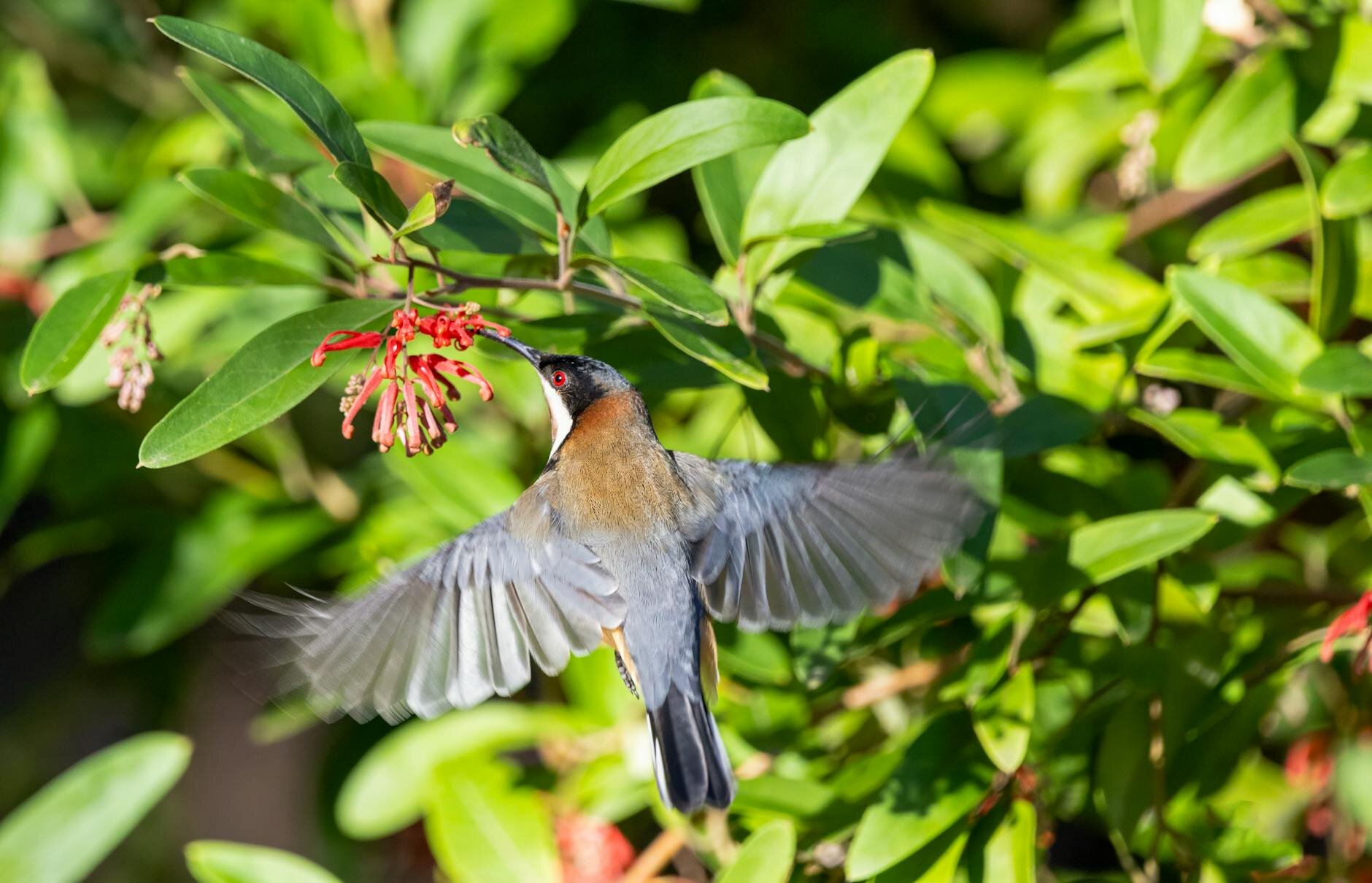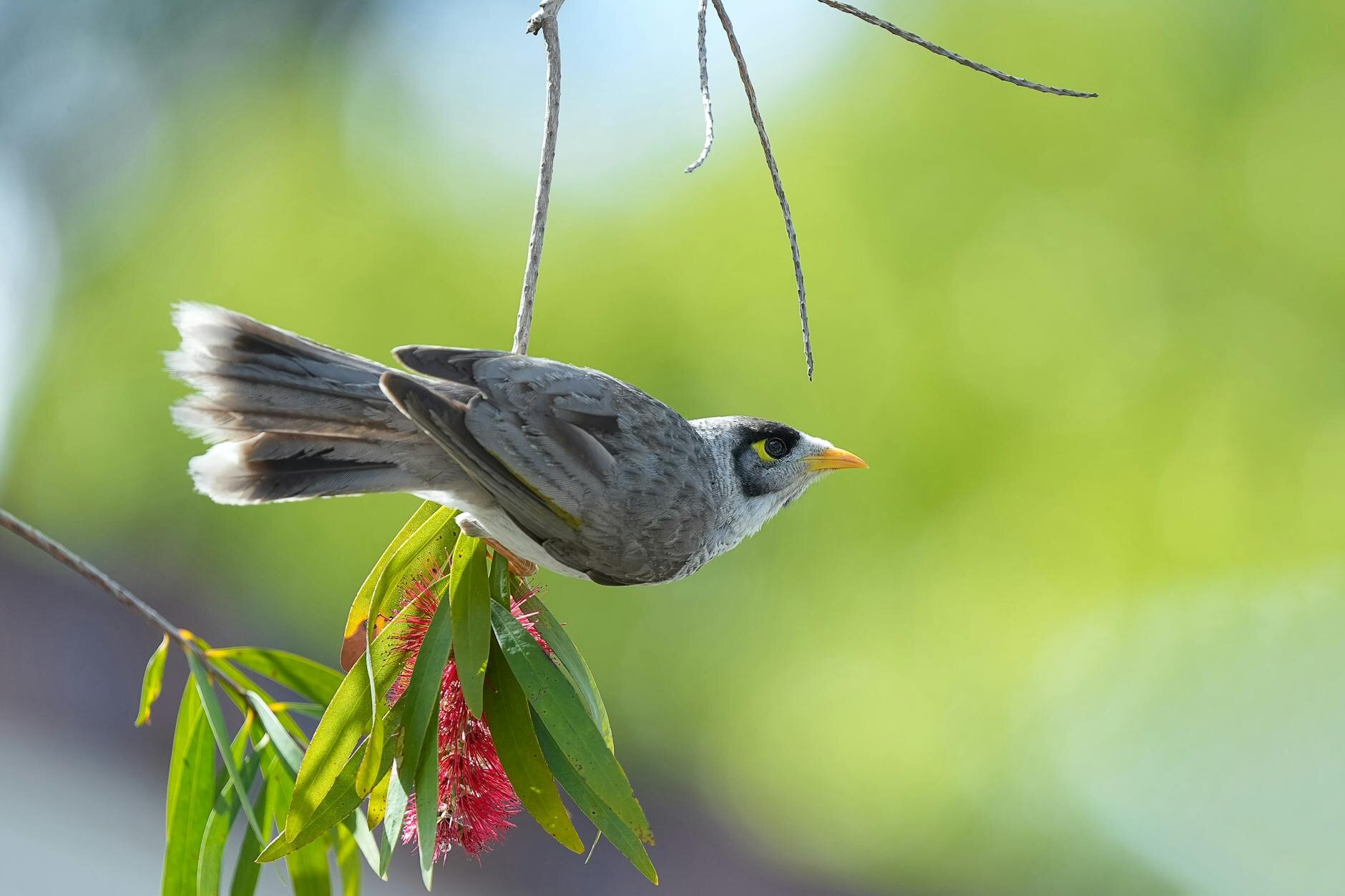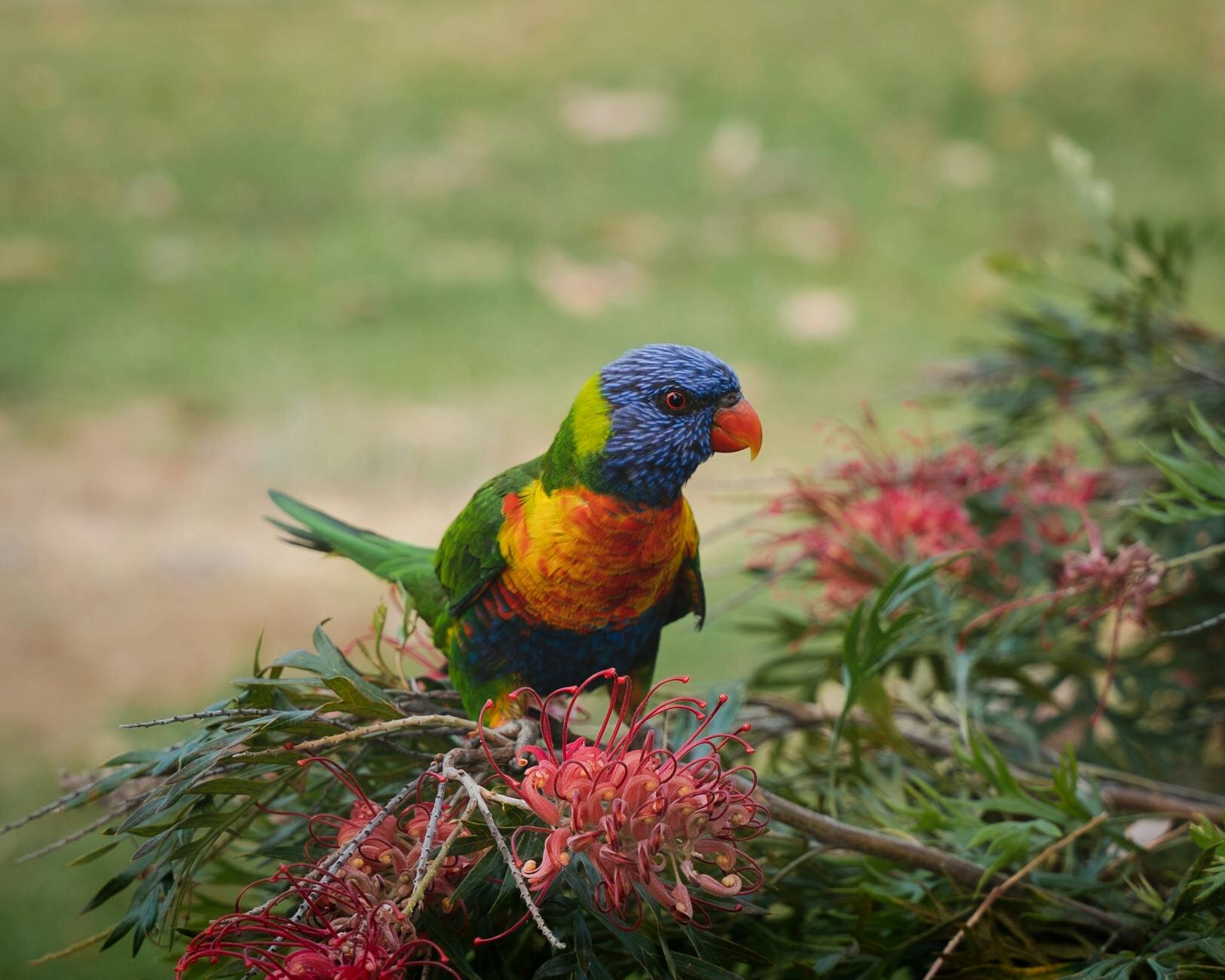Last Updated: 09/09/2025
Feeding Honeyeaters
Want to help your local honeyeaters? Putting out sugar water or bread can do more harm than good. Our vet explains the risks of improper feeding and shows you the best way to attract these native birds: by creating a safe garden sanctuary with Australian native plants and fresh water.
Author: Dr Emilee Lay BVSc BSc (Vet) Hons
Reading Time: 3 minutes - short read
Here in Australia we are lucky enough to have a wide variety of honeyeaters in the wild. Australian honeyeaters have brush-tipped tongues and include birds such as friarbirds, wattlebirds and even miners.
However tempting it is to feed them, it is important to realise that this can do more harm than good.
Feeding honeyeaters can increase the risk of disease, disrupts normal animal behaviour in the area and when fed improperly can lead to nutritional imbalances.
Honeyeaters in the wild

Honeyeaters thrive on a diet of nectar and pollen from our native flowers, sap, berries, and even sugary secretions of plant bugs as well as insects.
In the wild they often compete for resources such as plants in the same area. Some species are sedentary and others are very territorial.
What not to do when feeding Honeyeaters
Do not offer human foods
Offering honeyeaters sugary food and substances is not recommended. Refined sugars in human foods such as sugar water, jams and preserves are often in excess of what the average honeyeater will consume. They also lack important vitamins and minerals necessary for a balanced diet.
Do not create a daily feeding station
Creating feeding stations at home is a recipe for disaster, as it can result in large numbers of birds frequenting the same area on a regular basis.
- Without stringent cleaning protocols, and removal of faeces, this can create a suitable environment for a disease outbreak.
- Larger honeyeaters will often compete and force out smaller honeyeaters - potentially creating a population imbalance in your local area.
- Likewise, it can increase the risk of predation by cats and foxes as it concentrates the population to one area.
Creating an urban sanctuary for wild Honeyeaters

Plant a native garden
Planting native flowering shrubs, bushes or trees in your yard is a fantastic way to encourage local wildlife to flock to your garden without causing undue harm. Some plants you could consider growing include:
- Kangaroo Paws
- Banksias
- Bottlebrush
- Native Fuchsia
- Grevilleas
- Warratahs
- Callistemons
A balanced native garden is one that consists of up to 80% native plants. Make sure to have a wide range of plants, and make sure to choose plants that will grow well in your garden.
Growing plants in thickets/clumps can help provide protection for smaller honeyeaters.
It's important to think about planning your native garden in layers. Different layers of groundcover, shrub sizes, and trees will help even out competition in your yard, and minimise aggressive birds. Don't forget to also think about when your plant selections will flower, fruit and seed, so that you can have natural food available all year around.
In addition native grasses can help encourage nest building in your yard. Speak to your local nursery about what will work for you.
Provide fresh water
Ensuring that fresh water is easily available in your garden is another great way of helping wildlife in a safe way, especially during summer months. Ensure that water containers are cleaned out regularly.
You can even create a little pond with native water plants and fish to keep the mosquito larvae down!
What and how to feed wild Honeyeaters

Ensure that your yard is predator proof where reasonably possible.
If you do wish to offer food - then only offer food occasionally. This could include:
- Insects such as mealworms and crickets
- Native blossoms
- Small amounts of good quality commercial nectar mixes.
Your feeder should be made of quality, easy to disinfect materials (such as metal) and placed high up enough to minimise predation. Ensure that you use a veterinary disinfectant to clean the feeder daily.
Ultimately, the most valuable thing you can offer a wild honeyeater isn't a saucer of sugar, but a thriving, natural sanctuary. By cultivating a garden of native plants and providing a clean bird bath, you're not just feeding them for a day - you're supporting a healthy ecosystem for years to come.
Articles recommended for you
Our vet authored guide to the benefits of feeding your dog fresh food plus tips and advice for introducing it into their regular menu.
See our guide to protecting your pet from parasites from our vet team.
Thinking of getting a fish? Check out our guide for setting up a tank and home care tips!
Looking to understand horse feeds better? This comprehensive guide covers feeding recommendations for horses of all ages and disciplines.
Does your pet suffer from anxiety? Check out our Vet-guide for treatment options to help your pet.
History
Our experts continually monitor the health and wellness space and we update our articles when new information becomes available.
Wed 10 Sep 2025
Edited by Dr Gillian Hill BVSc (Hons)Dr Emilee Lay BVSc BSc (Vet) Hons
Veterinarian
Dr. Emilee graduated from the University of Sydney in 2018 with a Bachelor of Veterinary Science and Bachelor of Science (Veterinary Studies) and as a student worked for a number of years as a small animals and exotics nurse in clinics across Sydney. She is currently a practicing small animal and exotic vet along the Coast. Emilee holds a special passion for avian and exotic medicine (bunnies being her favourite patients), as well as animal behavioural medicine!

